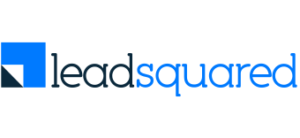Think about the last marketing email that made you click. Chances are, it didn’t feel like a mass blast—it spoke directly to your needs, referenced something you’d shown interest in, or arrived at exactly the right moment in your decision-making process.
That’s the power of personalization, and it’s no longer a nice-to-have reserved for enterprise brands with massive budgets.
The data backs this up. 80% of consumers are more likely to purchase when brands offer personalized experiences. According to McKinsey research, 71% of customers demand personalized interactions from businesses, and 76% get frustrated when this isn’t the case. Yet despite these compelling numbers, most B2B and B2C marketers still struggle to move beyond basic batch-and-blast tactics. They recognize that personalization drives revenue, but lack a systematic, repeatable framework to execute targeted marketing campaigns at scale using their CRM.
This guide changes that. You’ll learn how to design, build, and optimize personalized marketing campaigns using CRM—with specific, hands-on implementation steps.
Throughout, we’ll demonstrate these tactics using LeadSquared CRM, giving you a clear, practical blueprint you can apply immediately. By the end, you’ll have a proven playbook to create multi-channel campaigns that move prospects through awareness, activation, retention, and win-back stages with measurable ROI. Read on!
Understanding your marketing campaign target audience better
Before launching any campaign, you must define exactly who you’re targeting. Personalization fails when built on assumptions rather than data.
Building your ideal customer profile (ICP)
Assuming you already have a CRM in place—like LeadSquared—you can start by tapping into the firmographic and behavioral data already available:
- Company attributes: Industry, revenue band, employee count, technology stack
- Engagement signals: Page visits, content downloads, email interactions, product usage
- Purchase behavior: Deal size, sales cycle length, contract type
- Intent indicators: High-value page visits, pricing page frequency, competitor research
Segmentation framework for targeted marketing campaigns
Effective personalization requires layering multiple segmentation dimensions:
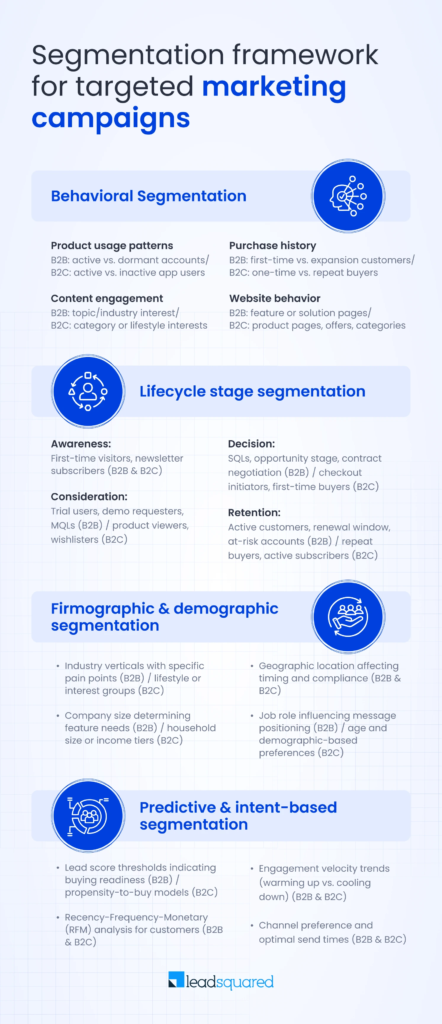
- Product usage patterns (B2B: active vs. dormant accounts / B2C: active vs. inactive app users)
- Content engagement (B2B: topic/industry interest / B2C: category or lifestyle interests)
- Purchase history (B2B: first-time vs. expansion customers / B2C: one-time vs. repeat buyers)
- Website behavior (B2B: feature or solution pages / B2C: product pages, offers, categories)
Lifecycle stage segmentation
- Awareness: First-time visitors, newsletter subscribers (B2B & B2C)
- Consideration: Trial users, demo requesters, MQLs (B2B) / product viewers, wishlisters (B2C)
- Decision: SQLs, opportunity stage, contract negotiation (B2B) / checkout initiators, first-time buyers (B2C)
- Retention: Active customers, renewal window, at-risk accounts (B2B) / repeat buyers, active subscribers (B2C)
- Win-back: Churned customers, expired trials (B2B) / lapsed shoppers, canceled subscribers (B2C)
Firmographic & demographic segmentation
- Industry verticals with specific pain points (B2B) / lifestyle or interest groups (B2C)
- Company size determining feature needs (B2B) / household size or income tiers (B2C)
- Geographic location affecting timing and compliance (B2B & B2C)
- Job role influencing message positioning (B2B) / age and demographic-based preferences (B2C)
Predictive & intent-based segmentation
- Lead score thresholds indicating buying readiness (B2B) / propensity-to-buy models (B2C)
- Recency-Frequency-Monetary (RFM) analysis for customers (B2B & B2C)
- Engagement velocity trends (warming up vs. cooling down) (B2B & B2C)
- Channel preference and optimal send times (B2B & B2C)
How to create targeted and personalized marketing campaigns
Creating truly personalized campaigns requires more than inserting a first name token. It’s a systematic process that combines clean data, intelligent segmentation, behavioral triggers, and multi-channel orchestration. Here’s the four-step framework that delivers measurable results:
Step 1: Build your CRM data foundation
Your personalization engine runs on data quality.
In LeadSquared, this means:
Map essential data fields
Standard fields
- Name, email, phone (B2B & B2C)
- Company, industry, job title (B2B)
- Age, location, preferred store/app platform (B2C)
Custom fields
- Product interest (B2B: solution/module interest / B2C: category or brand interest)
- Trial end date (B2B SaaS) / subscription renewal date (B2C)
- Pain points (B2B: operational gaps / B2C: lifestyle needs or problems)
- Buyer stage (B2B: MQL → SQL / B2C: browser → buyer)
Consent fields
- Email opt-in, SMS consent (B2B & B2C)
- Communication preferences (B2B: webinar vs. product updates / B2C: promos vs. recommendations)
Scoring fields
- Engagement score (B2B: content + product engagement / B2C: browsing + cart actions)
- Fit score (B2B: firmographic match / B2C: persona or interest match)
- Intent signals (B2B: pricing page visits, demo requests / B2C: repeat product views, add-to-cart)
Create custom activities
Track behaviors that indicate buying intent:
Pricing page visits
- B2B: Plan/pricing comparison
- B2C: Product price checks, discount-page views
Case study downloads
- B2B: Industry-specific case studies
- B2C: Reviews, testimonials, UGC content views
Product demo views
- B2B: Demo videos, webinar replays
- B2C: Product explainer videos, unboxing videos
Competitor comparison searches
- B2B: “Tool A vs Tool B” pages
- B2C: “Brand X vs Brand Y” comparison content
Feature documentation access
- B2B: API docs, feature guides, integration help
- B2C: How-to guides, product usage tips, FAQs
Support ticket patterns
- B2B: Pre-upgrade queries, feature limitations raised
- B2C: Returns/exchanges, onboarding help, subscription change requests
These activities become powerful triggers for targeted campaigns.
Step 2: Implement lead scoring for precision targeting
Lead scoring separates window shoppers from ready buyers. In LeadSquared, build a composite scoring model:
Fit score (demographic/firmographic)
- +20 points: Target industry
- +15 points: Decision-maker title
- +10 points: Company size in ICP range
- +15 points: Technology stack alignment
Intent score (behavioral)
- +10 points: Pricing page visit
- +8 points: Demo request
- +5 points: Email click
- +3 points: Blog post read
- +15 points: Product trial started
Score decay rules: Set decay to prevent stale leads from staying artificially high:
- -2 points per week of inactivity
- -5 points if email bounces
- Reset score to baseline after 90 days dormant
This creates dynamic segments that automatically update as prospects engage or disengage.
Step 3: Build dynamic segmentation
Static lists become outdated instantly. Dynamic segmentation in LeadSquared keeps your targeting current.
Create smart views and dynamic lists
Example 1: High-intent MQLs
- Lead Score > 70
- Industry = SaaS OR EdTech
- Email opened in last 7 days
- Has NOT requested demo yet
Example 2: Trial activation risk
- Trial started > 3 days ago
- Product logins < 2
- Has NOT completed setup checklist
- Engagement score < 30
Example 3: Customer win-back
- Last purchase > 6 months ago
- Email engagement in last 30 days
- Previous LTV > $5,000
- Has NOT been contacted by sales in 60 days
These lists automatically add and remove leads based on real-time behavior, ensuring your targeted digital marketing campaigns always reach the right people at the right moment.
Step 4: Design multi-channel customer journeys
Map journeys across the entire lifecycle, not just the top of the funnel.
Awareness stage journey
- Trigger: First website visit from paid ad
- Day 0: Welcome email with educational content
- Day 2: Blog post on key pain point (conditional on industry)
- Day 5: Case study from similar company
- Day 7: Invitation to webinar or demo
Activation stage journey
- Trigger: Trial signup or form submission
- Hour 0: Onboarding email with setup checklist
- Day 1: SMS reminder to complete first action
- Day 3: In-app message highlighting unused feature
- Day 5: Success story email showing quick wins
- Day 7: Personal outreach if activation goals not met
Retention stage journey
- Trigger: 30 days before renewal or engagement drop
- Week -4: Value realization email with usage stats
- Week -3: New feature announcement relevant to their use case
- Week -2: Customer success check-in
- Week -1: Renewal incentive with social proof
Win-back stage journey
- Trigger: 60 days post-churn or trial expiration
- Day 60: “We’ve missed you” email with product updates
- Day 75: Special offer or new use case content
- Day 90: Survey to understand churn reasons
- Day 120: Final value proposition with competitive comparison
LeadSquared implementation: Step-by-step build
Let’s walk through building a complete targeted email marketing campaign in LeadSquared—a trial nurture sequence for B2B SaaS users.
Setting up your automation workflow
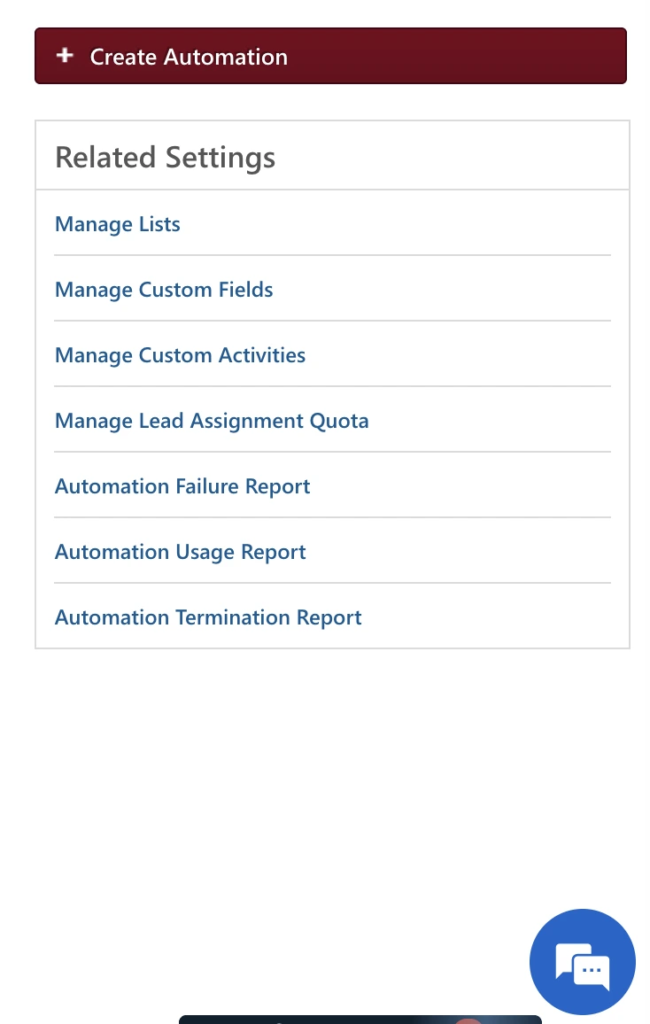
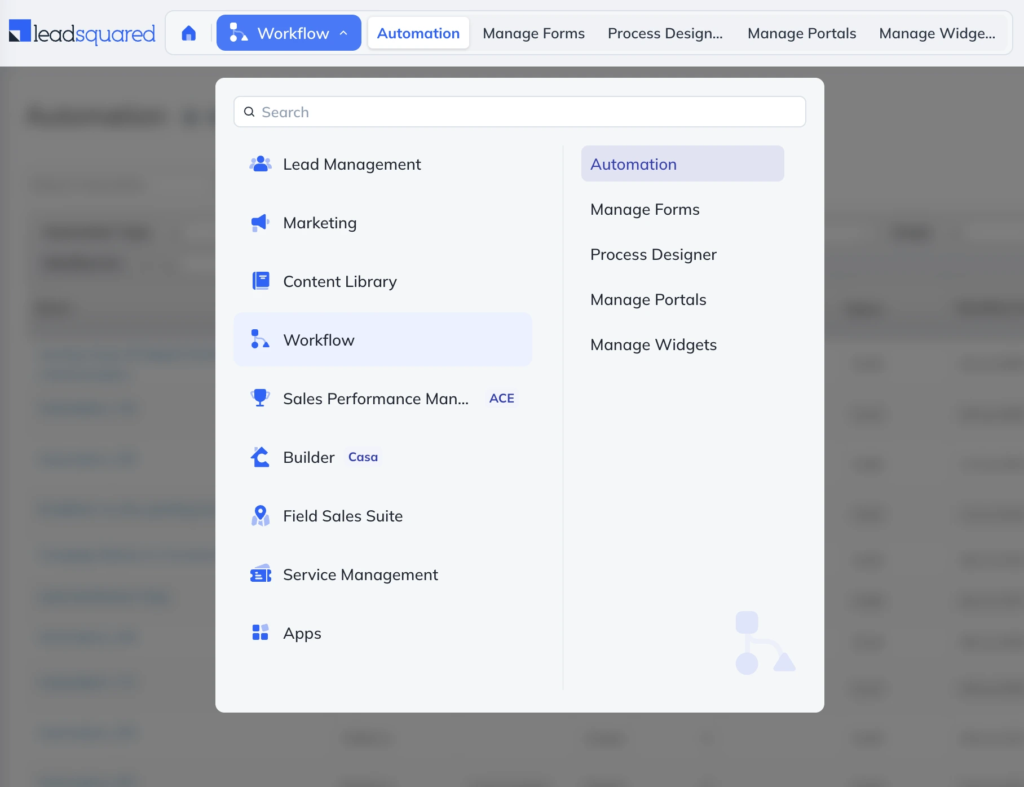
Step 1: Navigate to automation
In LeadSquared, go to Marketing > Automation > Create New Automation
Step 2: Define your trigger
- Trigger type: Lead Activity
- Activity: “Trial Started”
- Frequency: Trigger only once per lead
- Add filter: Industry in [SaaS, Technology, Professional Services]
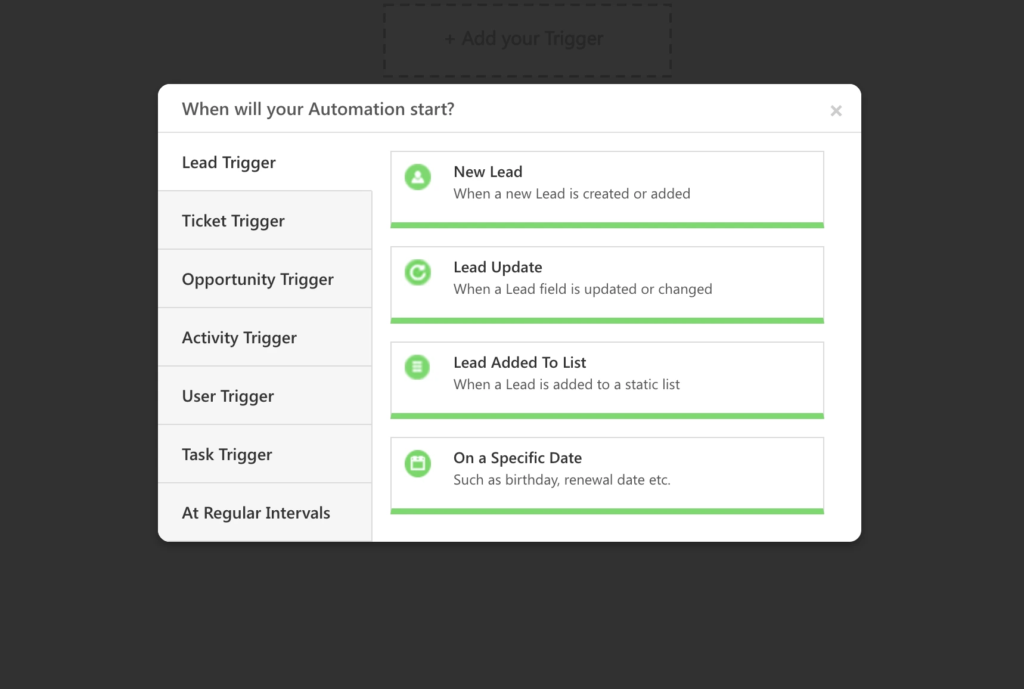
Step 3: Add a wait step
- Wait duration: 1 hour (let them explore first)
Step 4: Build conditional branches
Branch 1: Active trial users
- Condition: Custom Activity “Product Login” count > 1 in last 24 hours
- Action: Send “Getting Started Tips” email
- Personalization: Include features they’ve used
Branch 2: Inactive trial users
- Condition: Custom Activity “Product Login” count = 0 in last 24 hours
- Action: Send “Quick Setup Guide” with video walkthrough
- Add SMS: “Need help? Here’s a 3-minute setup video [link]”
Step 5: Add time-based follow-ups
For active users:
- Day 3: Send feature spotlight email based on their industry
- Day 5: Share customer success story from similar company
- Day 7: Trigger sales notification if lead score > 80
- Day 10: Invitation to book implementation call
For inactive users:
- Day 2: Send troubleshooting email with common setup issues
- Day 4: Personal outreach from customer success
- Day 6: Offer live onboarding session
- Day 8: Move to “Trial At-Risk” list for sales intervention
Step 6: Insert personalization tokens
Go beyond {{First_Name}}. Use:
- {{Company_Name}} throughout subject lines and body
- {{Industry}} to customize pain points
- {{Trial_End_Date}} to create urgency
- {{Feature_Interest}} to highlight relevant capabilities
- {{Referring_Source}} to acknowledge how they found you
Step 7: Use conditional content blocks
IF {{Lead_Score}} > 70 THEN
Show: “Talk to Sales” CTA with calendar link
ELSE
Show: “Explore More Features” CTA to help center
END IF
IF {{Company_Size}} > 500 THEN
Include enterprise security and compliance section
ELSE
Include SMB pricing and quick deployment section
END IF
Step 8: Set journey goals and exit criteria
Journey goal: Lead converts to paid customer
Exit criteria:
- Trial converts to paid (remove from workflow)
- Trial expires (move to win-back workflow)
- Lead requests to pause communications (respect suppression)
- Unsubscribe from any email (automatic suppression)
Step 9: Configure A/B tests
Test subject lines:
- Variant A: “{{First_Name}}, here’s how to get started with {{Product_Name}}”
- Variant B: “Quick setup guide for {{Company_Name}}”
- Split: 50/50
- Winner metric: Open rate
- Measurement window: 24 hours
Test content:
- Variant A: Long-form educational approach
- Variant B: Short bulleted quick wins
- Winner metric: Click-through rate to product login
Step 10: Set up reporting dashboard
Monitor in LeadSquared Reports:
- Automation performance: Entry vs. completion rates
- Branch effectiveness: Which path converts better
- Email metrics: Open, click, reply, unsubscribe rates
- Conversion tracking: Trial-to-paid conversion by segment
- Revenue attribution: Pipeline influenced by campaign
Five targeted marketing campaign examples
1. B2B SaaS trial nurture campaign
Audience: Trial users who haven’t hit key activation milestones
Channels: Email • SMS • In-app
Workflow Highlights:
- Day 0: Welcome + setup checklist
- Day 1: SMS nudge to complete first action
- Day 2: Feature spotlight email
- Day 3: In-app prompt for unused feature
- Day 4: Industry-specific success story
- Day 6: Extended trial/upgrade incentive
- Day 8: Sales outreach for high-scoring leads
Indicative impact:
SaaS teams using LeadSquared-style activation journeys frequently see sharper product adoption and stronger trial-to-paid momentum compared to generic onboarding.
2. eCommerce browse-abandon campaign
Audience: Shoppers who browsed products but didn’t add to cart
Channels: Email • Meta Retargeting • Onsite Personalization
Workflow Highlights:
- Hour 1: Viewed-products reminder
- Hour 6: Dynamic retargeting ad
- Day 1: Review/social-proof email
- Day 2: Limited-time offer
- Day 3: Related-product recommendations
- Return visit: Smart onsite banner
Indicative impact:
Brands layering LeadSquared-style multichannel nudges often see more shoppers returning and converting than with stand-alone reminders.
3. EdTech lead-to-enrollment Journey
Audience: Parents/students who downloaded a program catalog
Channels: Email • SMS • WhatsApp
Workflow Highlights:
- Day 0: Program highlights
- Day 2: Virtual campus tour link
- Day 3: Graduate success story
- Day 5: Info-session invite
- Day 7: Application reminder
- Day 10: Counselor call
- Day 14: Scholarship reminder
Indicative impact:
Personalized enrollment journeys like this typically drive higher engagement and smoother movement from inquiry to enrollment when powered by CRM intelligence.
4. Healthcare appointment-reminder Flow
Audience: Patients with upcoming or overdue appointments
Channels: SMS • Email • Patient Portal
Workflow Highlights:
- Day -7: Confirmation + prep instructions
- Day -3: Location/parking reminder
- Day -1: Confirm/reschedule option via SMS
- Day 0: Final reminder
- No-show: Auto-reschedule prompt
- Post-visit: Feedback survey + next appointment
Indicative impact:
Healthcare organizations using automated, multi-touch reminders often experience reduced no-shows and stronger patient satisfaction.
5. Financial services cross-sell journey
Audience: Customers holding only one product but eligible for more
Channels: Email • Direct Mail • Advisor Outreach
Workflow Highlights:
- Week 1: Financial planning education
- Week 2: Savings/retirement calculator
- Week 3: Customer testimonial
- Week 4: Personalized offer mailer
- Week 5: Advisor call
- Week 6: Limited-time incentive
Indicative impact:
Institutions running structured, data-driven cross-sell journeys often see improved product adoption and higher customer lifetime value.
Three targeted email marketing campaign examples
Campaign 1: Product feature adoption
Subject line options:
- “{{First_Name}}, you’re missing out on {{Company_Name}}’s most powerful feature”
- “How {{Similar_Company}} saved 15 hours/week with [Feature]”
- “Unlock [Feature] – built specifically for {{Industry}} teams”
Content structure:
- Personalized greeting with usage stats: “You’ve logged in 12 times this month—here’s how to get even more value…”
- Problem statement specific to their industry
- Feature benefit with ROI calculator
- 2-minute video walkthrough
- Customer quote from same industry
- CTA: “Activate [Feature] Now” (one-click setup link)
Targeting: Active users who haven’t used advanced features, Lead Score > 60
Campaign 2: Webinar invitation with smart timing
Subject line options:
- “{{First_Name}}, join us: [Topic] for {{Industry}} leaders”
- “Exclusive webinar: How to [solve pain point] ({{Date}})”
- “{{Mutual_Connection}} recommended this webinar for you”
Content structure:
- Personalized hook referencing their recent content engagement
- Webinar topic addressing their documented pain point
- Speaker credentials and company logos of attendees
- Conditional agenda based on their role:
- Marketing leaders: Strategy and ROI focus
- Technical users: Implementation and integration focus
- Date/time personalized to their time zone
- CTA: Calendar add button with automatic reminder sequence
Targeting: Engaged leads with 2+ content downloads in last 30 days, not yet SQL
Campaign 3: Customer renewal with usage insights
Subject line options:
- “{{Company_Name}}’s year with {{Product_Name}}: Here’s your impact”
- “Your renewal is coming—here’s what you’ve accomplished”
- “{{First_Name}}, your personalized ROI report is ready”
Content structure:
- Personalized data visualization of their usage and results
- Year-over-year comparison showing growth
- ROI calculation with industry benchmarks
- Testimonial from their team member (if available from surveys)
- New features launched since they joined
- Conditional upgrade offer if their usage suggests need for higher tier
- Renewal incentive (early-bird discount or added features)
- CTA: “Renew Now” with one-click link to customer portal
Targeting: Customers 60-90 days from renewal date, usage indicates strong engagement.
Advanced personalization: Beyond email
SMS and WhatsApp campaign integration
LeadSquared enables multi-channel orchestration with platform-native SMS and WhatsApp capabilities.
SMS best practices:
- Obtain explicit opt-in with carrier-compliant language
- Keep messages under 160 characters
- Include clear opt-out mechanism (STOP to unsubscribe)
- Use for time-sensitive triggers: appointment reminders, cart abandons, trial expirations
- Personalize send times based on engagement data

WhatsApp journey example: Build rich-media experiences with images, documents, and buttons. Perfect for:
- Onboarding sequences with video tutorials
- Support conversations with conditional responses
- Order updates with tracking links
- Survey campaigns with quick-reply buttons
Configure in LeadSquared: Marketing > Journeys > WhatsApp Journey
Retargeting and paid media integration
Meta Lead Ads integration: LeadSquared syncs Meta lead forms directly into your CRM, maintaining UTM parameters and ad data for attribution.
Setup: Marketing > Integrations > Meta Lead Ads
- Map form fields to CRM fields
- Set lead source automatically
- Trigger nurture automation on sync
- Track CPL and conversion rate by campaign
Google Ads integration: Push high-intent segments back to Google for Customer Match audiences.
Workflow:
- Create Dynamic List in LeadSquared: High-score leads who visited pricing page
- Export to Google Ads as Customer Match audience
- Run search/display campaigns with tailored messaging
- Track conversions back in LeadSquared with webhook
Website personalization with tracking
LeadSquared’s website tracking script enables behavioral triggers and onsite personalization.
Implementation:
- Install tracking code: Settings > Website Tracking > Copy script
- Define page visit activities: Pricing, case studies, product pages
- Set visit-based triggers in automation workflows
- Track anonymous visitors and identify on form submission
Use cases:
- Show returning visitors personalized homepage banner
- Trigger chat popup for high-score leads on pricing page
- Display exit-intent offer based on pages viewed
- Send email follow-up after key page visit pattern
Testing framework for continuous optimization
Personalization isn’t “set and forget”—it requires systematic testing.
A/B testing strategy
What to test:
- Subject lines (personalized vs. generic)
- Send times (by time zone, by role, by engagement history)
- From name (company brand vs. personal sender)
- Content length (short vs. comprehensive)
- CTA placement and copy
- Personalization depth (first name only vs. multi-attribute)
Testing protocol in LeadSquared:
- Navigate to Email/SMS campaign settings
- Enable A/B testing toggle
- Define variants (up to 5)
- Set split percentage
- Choose winner metric: Open rate, CTR, conversion
- Set measurement window: 6-24 hours
- Automatic winner deployment to remainder of list
Holdout groups for incremental lift
To prove the ROI of personalization, measure against a control group.
Setup:
- Create Dynamic List with your target segment
- Use Random Split function: 90% treatment, 10% holdout
- Suppress holdout group from personalized campaign
- Send generic campaign to holdout (or no campaign)
- Compare conversion rates after 30/60/90 days
Metrics to track:
- Incremental conversion lift
- Revenue per lead (treatment vs. control)
- Time to conversion
- Customer LTV by cohort
Epsilon data shows personalized campaigns deliver 5.7x higher conversion rates than generic campaigns—validate this in your own data.
Compliance and consent management
Personalization must respect privacy and regulations.
GDPR and CCPA compliance in LeadSquared
Consent capture:
- Add consent checkboxes to all forms
- Store consent timestamp and IP address
- Track consent source (which form, which campaign)
- Maintain audit trail of all communication preferences
Implementation: Settings > Compliance > Consent Management
- Define consent types: Email marketing, SMS, WhatsApp, third-party sharing
- Set up double opt-in workflows where required
- Configure automatic suppression rules
Opt-out management: LeadSquared automatically processes:
- Unsubscribe links in all emails
- STOP replies for SMS
- Suppression list uploads
- Right to be forgotten (RTBF) requests
Data minimization:
- Collect only necessary fields for personalization
- Set retention policies: Delete inactive leads after 2 years
- Anonymize data for reporting and testing
- Regularly audit custom fields and activities for relevance
Suppression lists and do-not-contact
Create global suppression rules:
- Competitors (by email domain)
- Job seekers
- Students (for B2B campaigns)
- Litigious contacts
- Previous complainants
Path: Settings > Suppression Lists > Upload CSV or define rules
Analytics, dashboards, and ROI tracking
Data drives improvement. Build dashboards that matter.
Key metrics for personalized marketing campaigns
Engagement metrics:
- Open rate (personalized vs. generic: expect 20-30% lift)
- Click-to-open rate (measures content relevance)
- Reply rate (indicates message resonance)
- Unsubscribe rate (watch for personalization fatigue)
Conversion metrics:
- MQL conversion rate by segment
- SQL conversion rate by journey
- Trial activation rate (completed key milestones)
- Win rate by personalization level
Lead score movement:
- Average scores increase post-campaign
- Velocity: Days from MQL to SQL by campaign
- Score decay rate (are you maintaining engagement?)
Revenue metrics:
- Pipeline generated by campaign
- Closed-won revenue attributed
- Customer acquisition cost (CAC) by segment
- Customer lifetime value (LTV) by cohort
- ROI: (Revenue – Campaign Cost) / Campaign Cost
Attribution metrics:
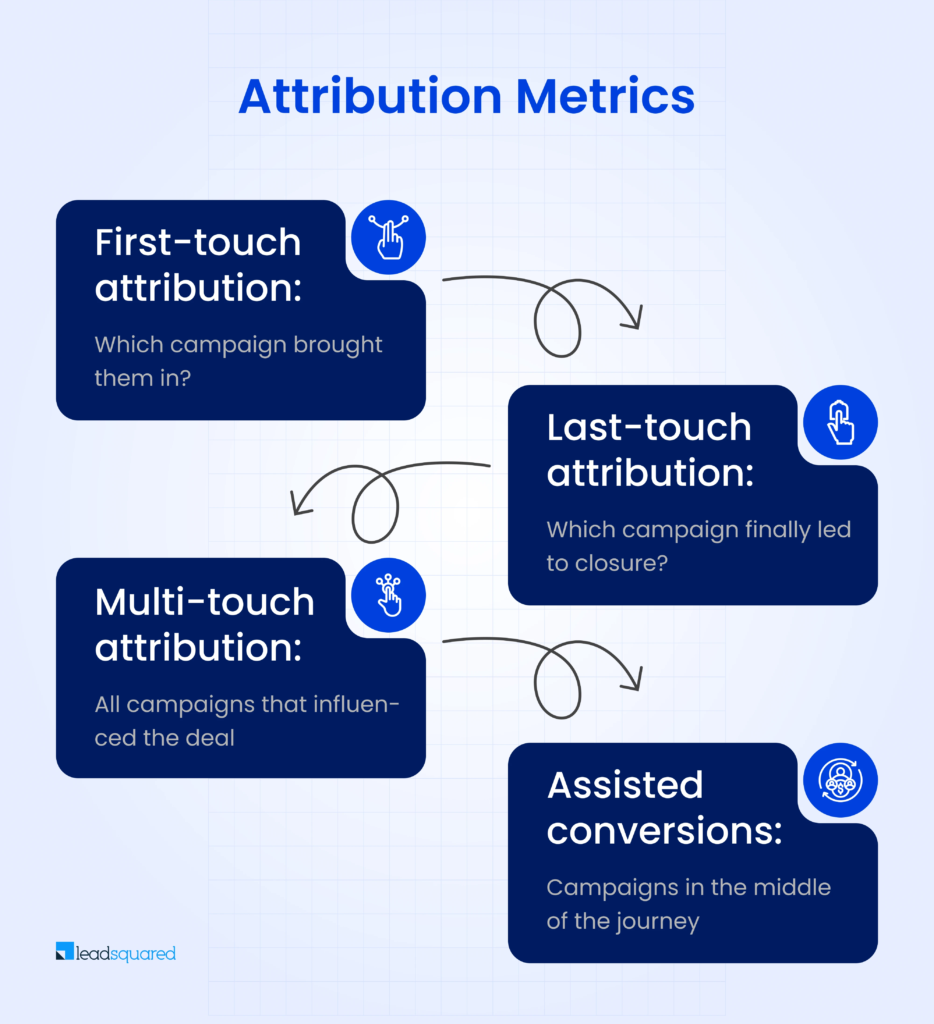
- First-touch attribution: Which campaign brought them in?
- Last-touch attribution: Which campaign finally led to closure?
- Multi-touch attribution: All campaigns that influenced the deal
- Assisted conversions: Campaigns in the middle of the journey
Building dashboards in LeadSquared
Campaign performance dashboard:
- Widget: Email/SMS performance summary (open, click, conversion)
- Widget: Automation workflow funnel (entry, progression, completion)
- Widget: Journey goal achievement rate
- Widget: A/B test results with winner declaration
- Widget: Lead source performance with cost-per-lead
Revenue attribution dashboard:
- Widget: Pipeline by campaign source
- Widget: Closed-won revenue by campaign
- Widget: ROI by marketing channel
- Widget: CAC by lead source and segment
- Widget: LTV:CAC ratio by campaign cohort
Segmentation performance dashboard:
- Widget: Conversion rate by segment
- Widget: Engagement score distribution
- Widget: Lead score histogram
- Widget: Lifecycle stage progression
- Widget: Top converting segments (table view)
Path: Reports > Custom Dashboards > Create New Dashboard
Proving ROI to leadership
McKinsey research shows personalization can deliver 5-15% revenue increases and 10-30% marketing efficiency gains. Here’s how to prove it in your organization:
Calculate campaign ROI:
Total Revenue from Campaign: $250,000
Campaign Costs (platform + creative + time): $15,000
ROI = ($250,000 – $15,000) / $15,000 = 1,567%
Show incremental lift:
Personalized Campaign Conversion: 4.2%
Generic Campaign Conversion: 1.8%
Lift = (4.2% – 1.8%) / 1.8% = 133% improvement
Calculate efficiency gains:
Pre-Automation: 40 hours/week on manual campaign management
Post-Automation: 8 hours/week on campaign optimization
Time Saved: 32 hours = $2,560/week in labor costs (at $80/hour)
Annual Savings: $133,120
Common pitfalls to avoid

Even experienced marketers make these mistakes:
1. Over-personalization: Using every available data point creates creepy, overly familiar messages. Balance personalization with professionalism.

2. Stale data: Personalization with outdated information (wrong job title, old company name) damages credibility. Implement data hygiene workflows.
3. One-size-fits-all journeys: Different segments need different paths. A startup founder needs different content than an enterprise procurement manager.
4. Ignoring mobile: 63% of emails are opened on mobile. Test every campaign on multiple devices and email clients.
5. No exit strategy: Let people leave journeys gracefully. Recognize when someone converts, churns, or disengages. Don’t keep sending.
6. Testing without statistical significance: Wait for adequate sample sizes before declaring test winners. Premature optimization leads to false conclusions.
7. Personalization without strategy: Adding {{First_Name}} isn’t personalization. Build campaigns on behavioral insights, preferences, and demonstrated intent.
8. Neglecting deliverability: Aggressive sending damages sender reputation. Warm up new IP addresses, maintain list hygiene, monitor bounce and complaint rates.
9. Attribution confusion Multi-touch attribution is complex. Use consistent models and give credit to assists, not just last-touch conversions.
10. Platform feature underutilization: Invest time learning advanced CRM features like conditional content, API integrations, and predictive analytics.
Best practices for sustainable personalization
Start with one journey
Don’t rebuild your entire marketing engine overnight. Pick your highest-value segment and one critical journey (e.g., trial nurture, onboarding, renewal). Perfect it, prove ROI, then expand.
Build modular content blocks
Create reusable email modules for different industries, personas, and use cases. Mix and match for efficiency without sacrificing relevance.
Maintain a testing roadmap
Schedule tests quarterly:
- Q1: Subject line formulas
- Q2: Content formats (video vs. text)
- Q3: Send time optimization
- Q4: Personalization depth
Collaborate across teams
- Sales: Share lead score thresholds and handoff criteria
- Product: Get usage data for behavioral triggers
- Customer Success: Identify expansion and churn signals
- Leadership: Align campaigns to business objectives
Document your playbook
Create standard operating procedures for:
- Campaign naming conventions
- Folder organization
- Testing protocols
- Approval workflows
- Performance review cadence
Continuously enrich data
Append firmographic data from enrichment tools, progressive profiling with Fforms, and behavioral data from website tracking. Richer data enables more precise personalization.
Conclusion: From generic to genius
The gap between average and exceptional marketing campaigns isn’t creativity—it’s execution. The brands winning in crowded markets aren’t those with bigger budgets, but those using data and automation to deliver relevance at scale.
With LeadSquared, you have enterprise-grade personalization capabilities without enterprise complexity. The platform’s lead scoring, dynamic segmentation, multi-channel automation, and attribution tracking give you everything needed to create targeted marketing campaigns that convert.
The playbook is clear:
- Build clean data foundations
- Segment by behavior and intent, not just demographics
- Design journeys that adapt to individual actions
- Test systematically and optimize continuously
- Measure what matters: engagement, conversion, and revenue
Start with one high-impact campaign. Prove the ROI. Scale what works.
Start building your personalized marketing campaigns today
Ready to move beyond generic email blasts?
LeadSquared offers prebuilt personalization automation templates.
Get started in minutes:
- Import your leads
- Activate lead scoring
- Launch your first personalized journey
- See results within days, not months
See personalized campaign examples specific to your industry and use case.
Frequently Asked Questions
What are personalized marketing campaigns?
Personalized marketing campaigns are targeted messages tailored to each customer based on their behavior, interests, or profile. Instead of sending generic content, businesses deliver relevant, timely communication that improves engagement and conversions.
With LeadSquared, these campaigns are easy to automate using segmentation, behavioral tracking, and personalized journeys across email, SMS, WhatsApp, and more.
What’s the difference between segmentation and personalization?
Segmentation divides your audience into groups based on shared characteristics (industry, company size, behavior). Personalization customizes the message for each individual within those segments. For example, segmentation puts all trial users into one group; personalization customizes the trial nurture email for each user based on their specific actions, features used, and engagement level. You need both: segmentation determines who receives which campaign, while personalization determines what they see within that campaign. The most effective targeted marketing campaigns layer both approaches.
How much personalization is too much?
The “creepiness factor” kicks in when you reference data the recipient doesn’t remember sharing or wouldn’t expect you to know. Safe personalization: name, company, role, content they downloaded, pages they visited, features they used. Risky personalization: personal details from social media, inferred demographics without explicit data, overly specific behavioral tracking (“I noticed you visited our pricing page 7 times”). The rule: only personalize with data they gave you directly or clearly consented to tracking (e.g., website cookies). When in doubt, A/B test different personalization levels and watch unsubscribe rates.
Can small businesses compete with enterprise-level personalization?
Absolutely. Personalization used to require enterprise budgets and technical resources. Modern CRM platforms like LeadSquared democratized these capabilities with visual automation builders, prebuilt templates, and affordable pricing. Small teams can achieve sophisticated personalization because you often have better data quality, faster decision-making, and closer customer relationships than enterprises. Start with high-impact, low-effort wins: personalized subject lines, behavior-triggered emails, and simple segmentation by industry or role. A well-executed three-email sequence targeting your top segment will outperform a generic campaign to your entire database.
